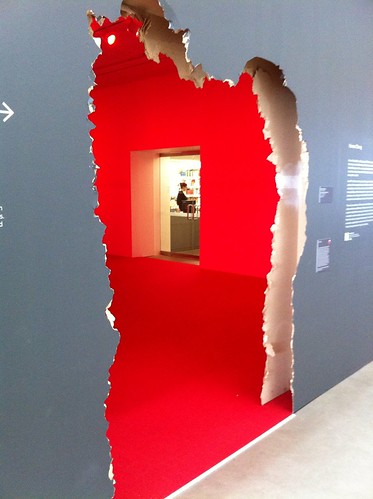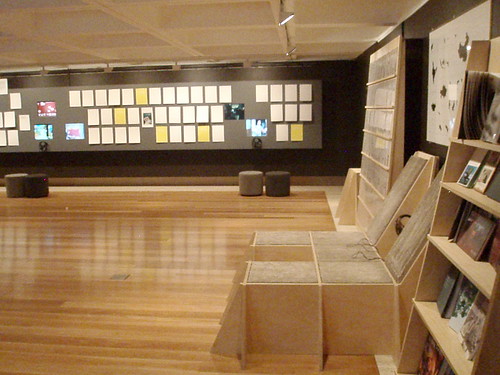I had a very different experience when I visited the 7th Asia Pacific Triennial of Contemporary Art (APT7) in Brisbane in early March. It was an amazing exhibition with many very exciting artists. The gallery had free wifi, which was clearly advertised. They provided links to access some art works like this recipe book (link is at end of this page), which could be downloaded using the gallery wifi.
I visited when some school students were there, and a high percentage of them were photographing and videoing the art works. Gallery staff were watching - so it was not some secret thing people should not be doing. These were amazing current art works, many of which should be around for decades, while some were temporary. I thought this open approach to photography was impressive.
It is important that photography in public spaces does not interfere with other people's use of the space, for example, use of tripods, or people being really slow, but it can be less intrusive that people looking at the exhibition (sometimes).
With photography becoming easier, and less obvious (particularly with smartphones) we need to educate people about photography in exhibitions, and if they really should not be taking photographs, give a clear and easy to understand reason why (and not treat them like criminals).
It was also impressive because some of the art works were around the 20 year archive of the exhibition.
It was a lovely way to profile archives, but also to show a different way they can be viewed - as art works themselves.
I also thought it was a great way to encourage people thinking about the importance of archives, and in making archives literally more visible.
The library was also featured in the exhibition with this dramatic entrance way.

This was a great way to profile the library, but the connection to the exhibition worked really well - as well as looking impressive. It was great to walk through the ripped wall into the red space, and then into the library. You could also see the library through a glass wall into the gallery - so even when this exhibition is not on, it is not hidden away, but is an obvious part of the gallery space.
You can see some of my photographs of the spaces below.

No comments:
Post a Comment